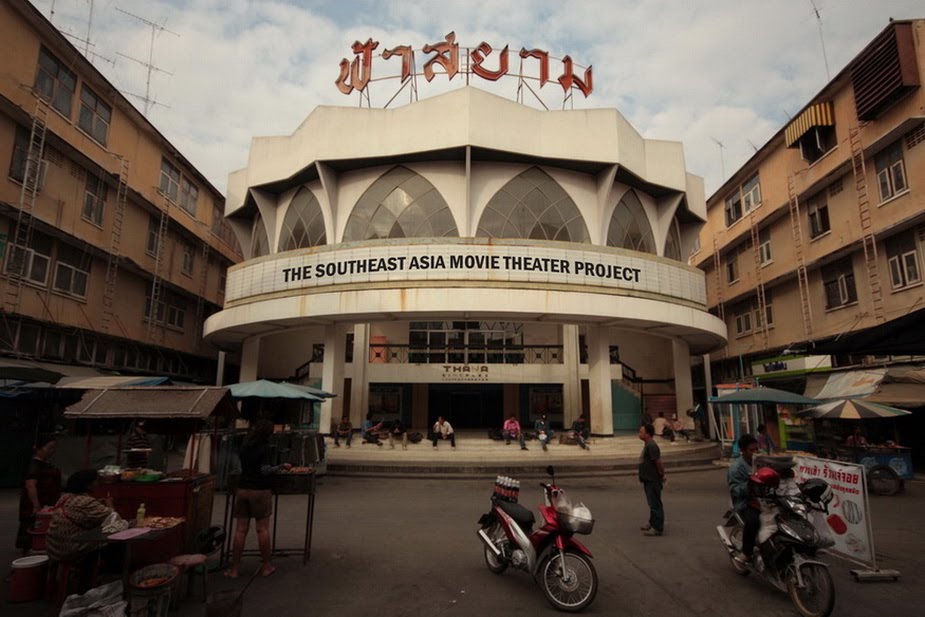From a few choice vantage points the Srakaew Rama calls to mind a ruin from a lost civilization, abandoned to the jungle's verdant strangle.
 |
| The Srakaew Rama resides in a mostly abandoned roadside development. |
While the ruinous aspect holds true at ground level, the more pedestrian reality is that the abandoned theater stands amid a failed edge city-type development, not an encroaching jungle. This was urban expansion on the heels of highway extension and the sky's-the-limit confidence brought on by automobile accessibility. Overbuilding at its finest is what it amounts to.
Thailand has no shortage of these kinds of blighted peri-urban cityscapes. They're nearly gratuitous in distribution, lining the edges of arteriole roads like warts on the fingers of civilization. This particular iteration originally housed a fresh market and the local bus station along with said cinema hall. Whatever order the collapse occurred in is unclear, but a mostly vacant business center is the clear result.
But to dwell on the dingy aesthetic of this lapsed land would miss the point. In its midst lies a ghost of cinemas past that still bears some marks of distinction, and some architectural delights for those so inclined to venture in.
 |
| The Srakaew Rama under morning sunlight. |
Had the Srakaew Rama been contracted in the years before developers went ape over projects that followed the highway, it might have been erected in the center of old Srakaew town, accessible by foot to a pedestrian-oriented population. The theater's architecture and scale are conducive to middle-of-the-block placement in a high density zone. One can imagine its bold signage and textured modernist facade serving as visual (and social) anchor to the traditional core of Srakaew.
Even in its present run-down condition the Srakaew Rama is a sight to behold. Yet being removed from a practical location, conveniently accessed by motor transport alone, ensures that it remains a hidden secret to all except locals and visitors so recondite as to ask "excuse me, but does your town have any old movie theaters?"
 |
| Ticket booth and poster boards |
For those adventurous enough to seek out the secretive, the tomb of the Srakaew Rama makes for an elegant if grime-coated jaunt.
Most notable among the leftovers is the handsome ironwork framing the ticket window and poster boards. These metal curlicues, painted a fading teal, add a loopy contrast to an otherwise streamlined concrete of the structure structure.
 |
| "Coming soon" |
In short, surveying ended at about the ticket counter. Urban exploration, believe it or not, is not really my thing.
 |
| "Coming Soon" again |
 |
| A mobile poster board with ornamental iron framing. |
 |
| The writing on the door reads "Children taller than this line must have a ticket to enter" |
 |
| Signage |
Even more than it's inconvenient location, the real reason for the Srakaew Rama's survival is simple neglect. The building's owner apparently took up residence in Australia years ago, abandoning the old cash cow for life down under. A more hands on overseer would have probably demolished it by now, or at least used it for some practical purpose.
Several locals remarked that it would be nice to see something become of the nearly 35 year old structure. A snack vendor operating a little stand nearby thought it would be nice if it were converted into a hotel, or lodging for itinerant workers.
Whatever adaptive measures are taken to bring some use to this building, one thing seems certain: the Srakaew Rama will never show a movie again.









































